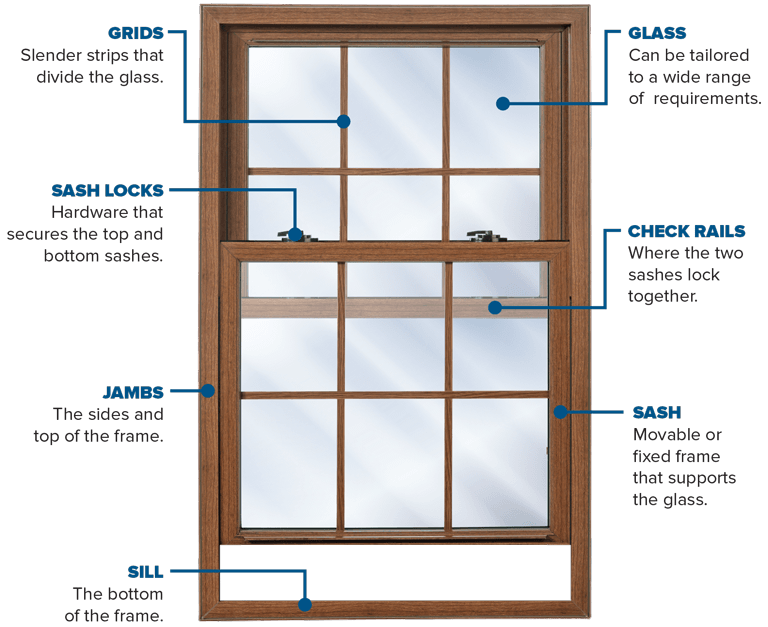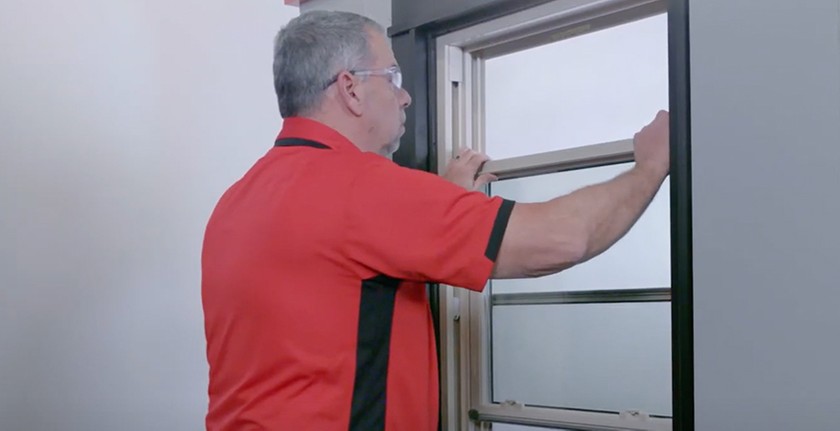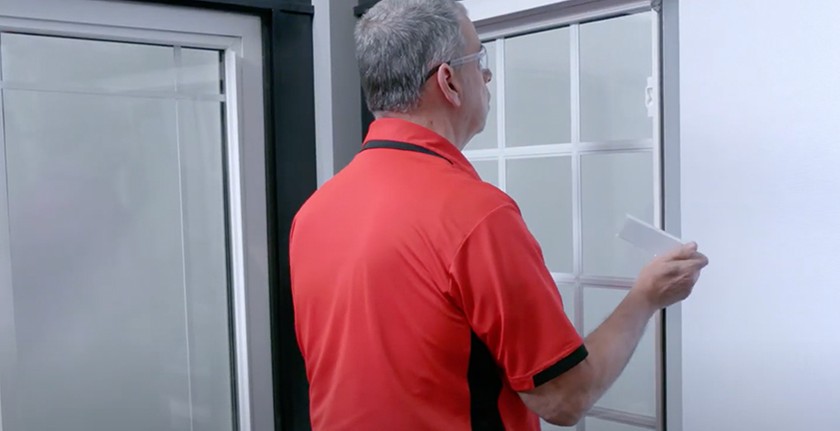A window sash is an important part of the design of any standard window. The sash contributes to the functionality, appearance and stability of the window.
Understanding what a window sash is, how it can be maintained and what to look for when inspecting your window sashes is important for the care and continued maintenance of your windows.
Here’s what every homeowner should know and what we will cover:
- What Is a Window Sash?
- What Does A Window Sash Look Like?
- Why Is A Window Sash Important?
- How Window Sashes Work?
- When to Replace a Window Sash
- When Do Windows Need Replacement?
- How to Maintain the Window Sash
What Is a Window Sash?
A window sash is a part of the window that surrounds the glass and holds the glass in place in the window frame. Some window sashes are moveable, enabling the glass to slide up and down on the track where it is positioned. Other sashes cannot be moved (1, 2).
Modern residential windows typically feature sashes. Single hung windows feature a single sash that moves and a single sash that doesn't. Double-hung windows feature two sashes that are both moveable.
What Does A Window Sash Look Like?
Sometimes homeowners have a hard time identifying which part of the window is the sash. To find the sash on a standard double-hung or single hung window, look at the wooden, aluminum or vinyl casing around the glass. This casing will be stuck in the window frame and will cling to the window frame on tracks. This casing is the sash.

Why Is A Window Sash Important?
The sash holds the glass in place and contributes to the overall stability of the window. The sash is an integral part of the window's construction (3).
The window sash is designed to be air tight to prevent air leaks and drafts around the window. Even moveable sashes are specially designed to maintain a tight seal that contributes to the overall energy efficiency of the home. Over time, this seal may become loose, which can contribute to the inefficiency of the window.
Sashes have special structural features that make this tight seal possible. For example, vinyl sashes are typically multi-chambered to prevent them from becoming distorted. Without this feature, windows would leak, emit drafts and cause problems in the home.
How Window Sashes Work?
Sash window parts consist of a variety of unique pieces including the counterweight, sash cord, pulley, rails and wag tails. These parts come together to allow the sash to move on the track smoothly and seamlessly. The entire system is designed to allow easy movement of the sash, so that anyone with normal strength can move the window with ease.
Most of these parts are hidden inside the hollow lining of the window frame and are not visible to the user. Each sash also contains a horizontal board or sill that directs rainwater away from the window to prevent water collecting inside and causing mildew and rot (4).
When to Replace a Window Sash
There are many ways to tell when a sash needs to be replaced. Window sashes are designed to be fixed firmly in place or to move up and down with fluidity. A window sash that has begun to fail will either allow water or air to enter the home or will not move properly. Sometimes the signs of a failing sash will be hidden until wood rot has begun to become an issue. Typically, a window sash does not need to be replaced until it is quite old (5, 6).
Wooden Windows
Wooden windows that have been exposed to air over a long period of time may begin to absorb moisture from the environment. This can be prevented by keeping a tight seal around the wood either with paint or with sealant.
However, if the seal begins to wear away, exposed wood will swell and shrink with changing humidity. When this happens, the window may become stuck or jammed in its frame. Sash replacement can help get the window working again.
In addition to the natural swelling and shrinkage that the window may experience, the sash may also become rotten, moldy or deteriorated.
Sometimes this damage shows itself through stains on the wood. Other times, this damage can be detected by poking the wood with a screw driver. If the screw driver sinks into the wood, this is a sign that the sash needs replacement.
Aluminum Windows
Older aluminum windows promoted sweating and condensation on the window, which then contributed to rotting of the frame around the window. You'll be able to tell if this is a problem by inspecting the windows on very cold days.
Feel the inside of the window for moisture and droplets of water. Replacement of the window sash may help, but ultimately the entire window may need to be replaced.
Vinyl Windows
In the early days of vinyl windows, it was common for the window sash to become warped and damaged over time. Vinyl windows have come a long way since this time, but many older windows still have problems.
If your old vinyl window sash becomes warped and poorly fit to the window frame, this will be evidenced by a draft, water leaks and problems moving the sash up and down.
Homeowners hoping to delay the total replacement of their windows may be able to fix the problem temporarily by replacing the sash, but eventually the windows themselves will benefit from replacement.
When Do Windows Need Replacement?
Windows need replacement when more than the sash is rotten, or when the sash needs regular replacement because of defects in the window. For single hung windows, if the upper sash is rotten, then the entire window must be replaced (7).
Homeowners often have a hard time telling when this is a problem. A contractor or window installer can help assess the situation.
How to Maintain the Window Sash
As a general rule, window sashes do not require regular maintenance. However, wooden windows do need to be resealed as their paint or sealant begins to deteriorate.
Inspecting window sashes on an annual basis can help prevent problems. When inspecting a window sash, start by scanning the sash for mold, mildew, scratches, soft wood and deterioration.
If the window appears to be alright visually, the final step of the inspection is to move the window up and down. If the sash moves freely without sticking and without great effort, the window is likely fine.
In order to help secure the window and provide a firmer seal to keep air from leaking in, it is recommended to install a second window latch. This will pull the two sashes firmly together (8, 9).


